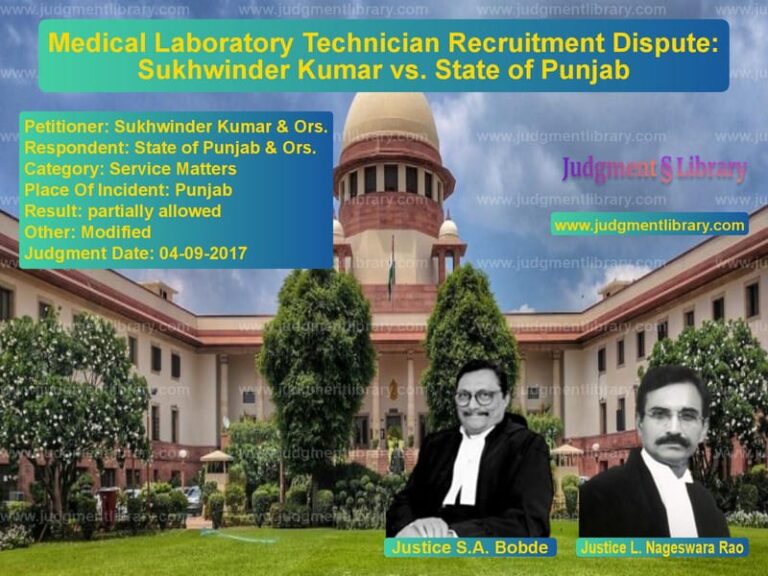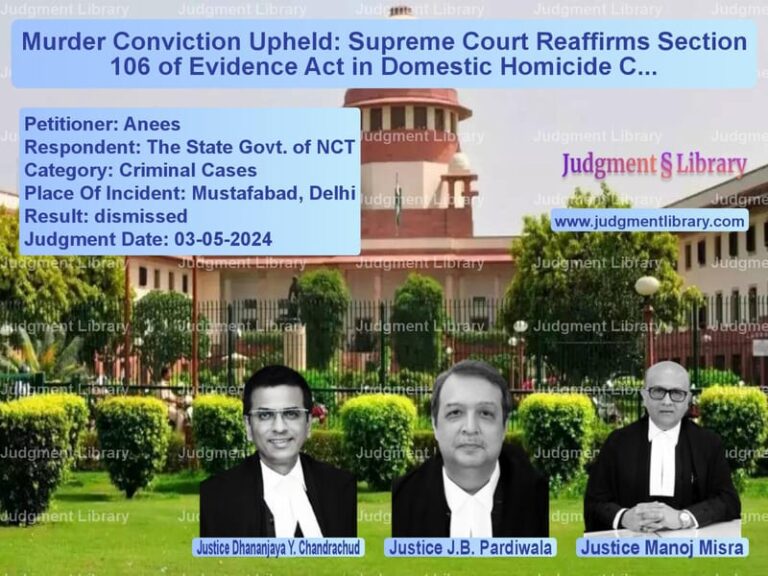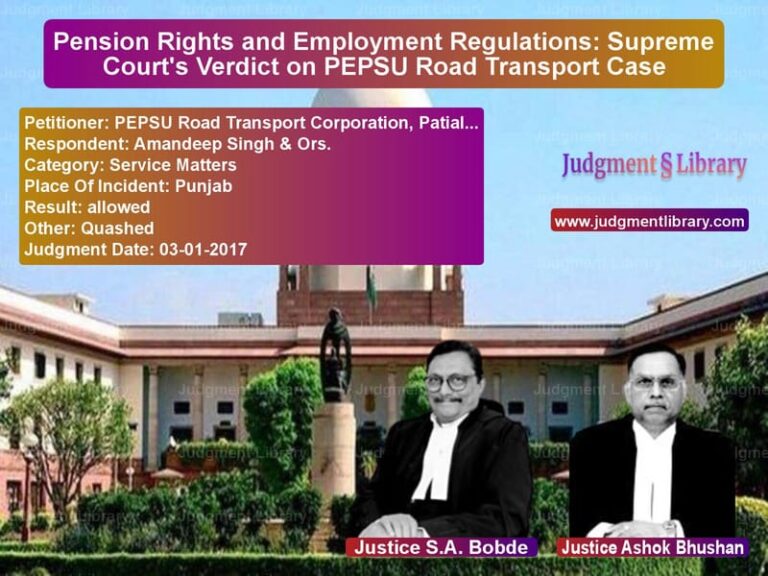Supreme Court Acquits Convicts in 1992 Murder Case Due to Lack of Identification
The Supreme Court of India recently delivered a crucial judgment in Dharma @ Dharam Singh & Anr. v. State of Haryana, where it overturned the conviction of two individuals accused of murder due to the failure of an eyewitness to identify them in court. The case involved a long-drawn legal battle over the murder of a village sarpanch in 1992.
Background of the Case
The case revolved around the murder of Sarabjit Singh, the Sarpanch of a village in Haryana, on June 23, 1992. The prosecution alleged that the appellants, Dharma @ Dharam Singh and Parkash, along with two other unidentified persons, shot Sarabjit Singh while he was returning from Chainsa with an eyewitness, PW-2 (Sukhi).
Key events in the legal proceedings:
- The trial court convicted the appellants under Section 302 read with Section 34 of the Indian Penal Code (IPC) and sentenced them to life imprisonment.
- The Punjab and Haryana High Court upheld the conviction in 2008.
- The appellants approached the Supreme Court in 2011, and in 2012, the Supreme Court granted them bail after noting that they had already served about eight years in prison.
- Due to a procedural issue, the appeal of one of the appellants was dismissed for non-prosecution but was later restored.
Legal Issues Raised
- Whether the conviction could be sustained solely based on the testimony of an eyewitness.
- Whether the failure of the eyewitness to identify the accused in court weakened the prosecution’s case.
- Whether the trial court and High Court erred in convicting the appellants without sufficient evidence.
Arguments by the Appellants (Dharma & Parkash)
- The only eyewitness, PW-2 (Sukhi), did not identify the accused in court.
- PW-3 (Rattan Singh), another alleged eyewitness, turned hostile and did not support the prosecution.
- The prosecution failed to establish the identity of the accused beyond a reasonable doubt.
- The appellants had already suffered incarceration for nearly eight years.
Arguments by the Respondent (State of Haryana)
- PW-2 had provided a detailed account of the murder, stating that the appellants fired multiple shots at the deceased.
- The appellants were known to the eyewitness before the incident.
- PW-2’s statement was corroborated by forensic evidence, including the post-mortem report.
Supreme Court’s Observations
The Supreme Court examined whether the conviction could stand despite the failure of PW-2 to identify the accused in court. Key observations included:
- PW-2, the primary eyewitness, described the sequence of events but did not identify the appellants in court.
- PW-3, the second alleged eyewitness, was declared hostile and did not support the prosecution.
- There was no forensic or circumstantial evidence directly linking the appellants to the murder.
- The trial court and High Court failed to consider the importance of in-court identification.
The Court referred to previous judgments, including:
- State of Maharashtra v. Sukhdeo Singh (1992) – Held that identification of the accused in court is critical for establishing guilt.
- Kartik Malhar v. State of Bihar (1996) – Observed that failure to identify accused in court severely weakens the prosecution’s case.
- Sharad Birdhichand Sarda v. State of Maharashtra (1984) – Established that conviction cannot be based on suspicion alone.
Final Judgment
The Supreme Court allowed the appeal, set aside the conviction, and ruled that:
- The appellants were acquitted of all charges due to lack of identification by the eyewitness.
- The judgment of the Punjab and Haryana High Court dated May 30, 2008, was quashed.
- The trial court’s judgment dated October 23, 1998, was also quashed.
- Since the appellants had already been released on bail, their bail bonds were canceled.
Implications of the Judgment
This ruling has significant implications for criminal jurisprudence:
- Emphasizes the importance of in-court identification: Eyewitness testimony must include identification of the accused.
- Sets a higher standard for conviction: Courts must ensure that identification evidence is strong before convicting an accused.
- Protects against wrongful convictions: Prevents individuals from being convicted solely based on statements made outside of court.
- Strengthens the right to a fair trial: Ensures that accused individuals are convicted only if evidence establishes guilt beyond a reasonable doubt.
The Supreme Court’s decision reinforces the need for clear and unequivocal identification in criminal trials, ensuring that justice is not based on mere suspicion.
Petitioner Name: Dharma @ Dharam Singh & Anr..Respondent Name: State of Haryana.Judgment By: Justice Abhay S. Oka, Justice Pankaj Mithal.Place Of Incident: Haryana, India.Judgment Date: 05-10-2023.
Don’t miss out on the full details! Download the complete judgment in PDF format below and gain valuable insights instantly!
Download Judgment: dharma-@-dharam-sing-vs-state-of-haryana-supreme-court-of-india-judgment-dated-05-10-2023.pdf
Directly Download Judgment: Directly download this Judgment
See all petitions in Murder Cases
See all petitions in Bail and Anticipatory Bail
See all petitions in Judgment by Abhay S. Oka
See all petitions in Judgment by Pankaj Mithal
See all petitions in allowed
See all petitions in Quashed
See all petitions in supreme court of India judgments October 2023
See all petitions in 2023 judgments
See all posts in Criminal Cases Category
See all allowed petitions in Criminal Cases Category
See all Dismissed petitions in Criminal Cases Category
See all partially allowed petitions in Criminal Cases Category







